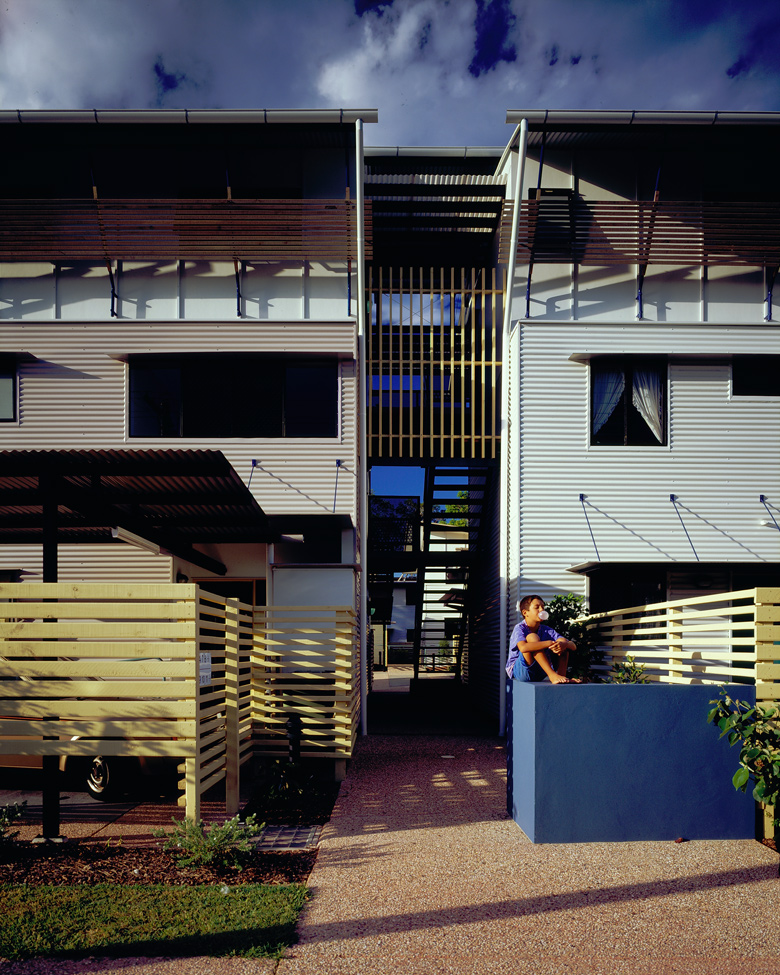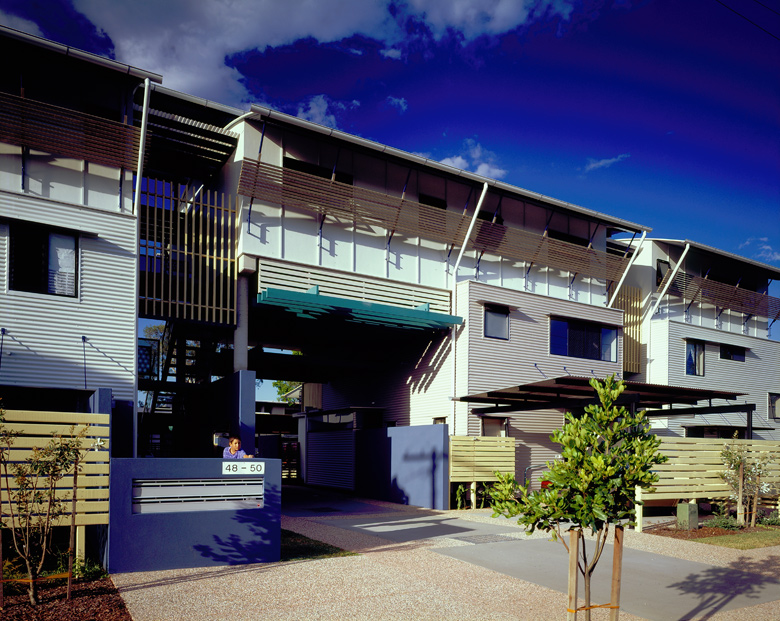Cotton Tree Pilot Housing Project 1995
In 1992 three forums were held to investigate socially, environmentally and aesthetically appropriate housing for the Sunshine Coast region. The Cotton Tree Pilot Housing Project was one of the outcomes. It was designed to provide a flexible alternative for higher density (65 dwellings per hectare), subtropical housing in older suburban and urban areas on the coast.
The commission came from the owners of adjoining sites: the Department of Housing and the Beecham family. The land – strategically positioned near public facilities, shopping, employment and recreational areas – was considered ideal for a pilot project. Both clients wanted to build low-cost housing: one to rent, the other to sell. To this public-private socio-economic mix was added lightweight, climate-responsive design.
The development consists of a series of attached and detached dwellings stepped from one storey to three storeys to facilitate solar access and access to prevailing sea breezes. Shared boundaries were adjusted to preserve a stand of paperbark trees. Subsequent environmental studies by the University of Queensland have found a substantial reduction in ‘heat island effect’, owing to the siting, orientation and landscape strategies in the design.
The private development component is lightweight timber-framed construction. The majority of the public housing component – a higher-density, multilevel development with fireproofing requirements – is reverse veneer masonry construction with a lightweight weatherproofing skin of corrugated iron and reinforced fibre cement board. Apart from the insulating qualities of reverse veneer, this construction technique also allowed the language of materials and the aesthetics of assembly to be applied over the whole site, across quite different building technologies.
RAIA Awards
1996 Environment Citation (National Award)
1996 Multiple Housing Award
1996 Queensland Regional Commendation












